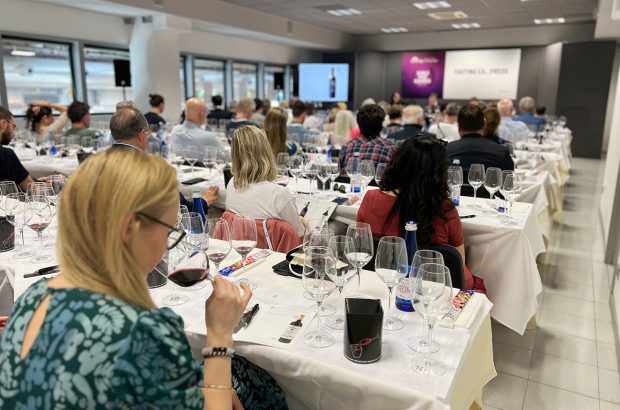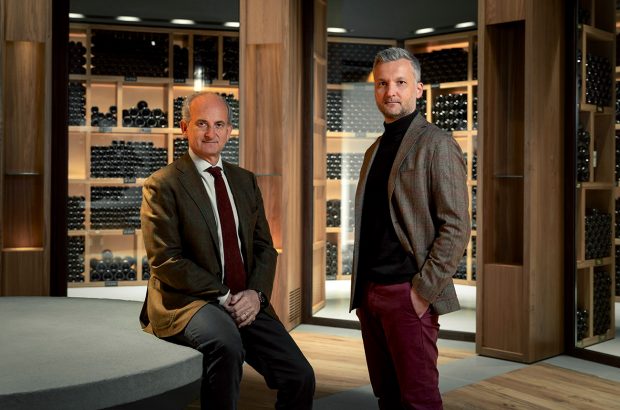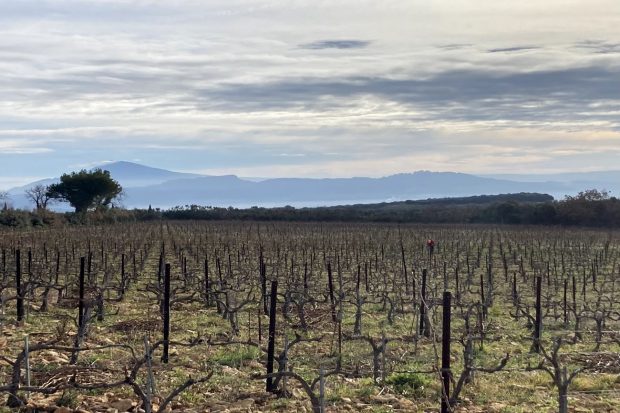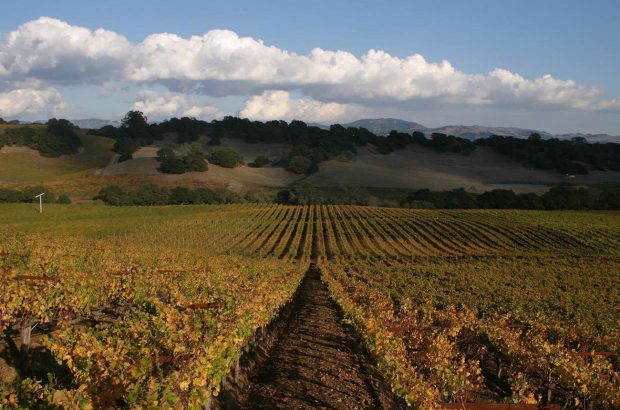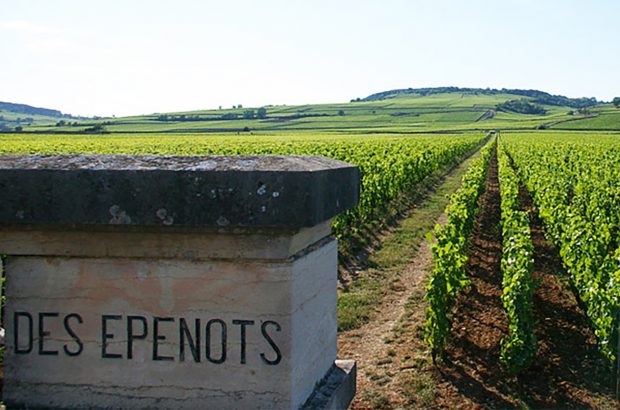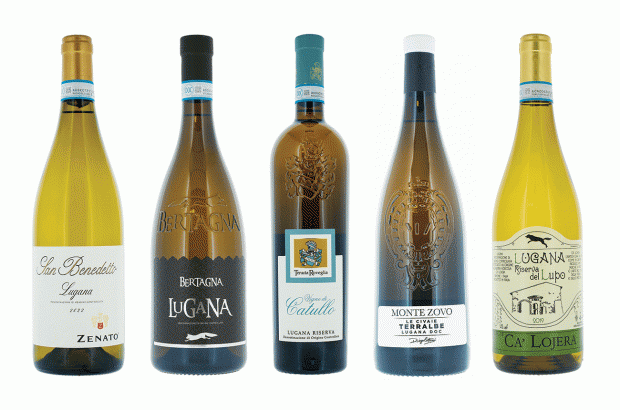While non-vintage (NV) is formally recognised as the mainstay of Champagne, it may seem odd that there is no equivalent recognition, by the authorities at least, for its well-groomed sibling, ‘multi-vintage’ (MV).
The dominance of the NV category seems, if anything, to be hardening (see ‘Shipments by category’ table), with MV not getting a look in. At 78.5% of total shipments in 2020 for all NV, that’s a huge volume of bottles, each having a story to tell.
Scroll down to see tasting notes and scores for 10 top non-vintage / multi-vintage Champagnes
Recently, however, there has been a quiet revolution, in the top echelons at least, with the aim of recognising, promoting and celebrating the diversity on display.
Non-vintage, if one stares hard at the term, is something of an empty phrase – of course there has been a vintage involved in the process! What’s more, all growers will, by definition, use more than one vintage in their NV wine – multi-vintage, in other words.
{"content":"PHA+SXQgc2VlbXMsIGF0IGZpcnN0IGJsdXNoLCBxdWl0ZSBsb2dpY2FsIHRvIGdpdmUgbW9yZSByZWNvZ25pdGlvbiB0byB0aGlzIHRlcm0uPC9wPgo8cD48ZGl2IGNsYXNzPSJhZC1jb250YWluZXIgYWQtY29udGFpbmVyLS1tb2JpbGUiPjxkaXYgaWQ9InBvc3QtaW5saW5lLTIiIGNsYXNzPSJpcGMtYWR2ZXJ0Ij48L2Rpdj48L2Rpdj48L3A+CjxwPkNoYW1wYWduZSwgc2F5IGl0cyBkZWZlbmRlcnMsIHNob3VsZCBiZSBzZWVuIGFzIG1vcmUgdGhhbiBhIHNpbXBsZSA8c3Ryb25nPjxhIGhyZWY9Imh0dHBzOi8vd3d3LmRlY2FudGVyLmNvbS93aW5lLXJldmlld3MtdGFzdGluZ3Mvc3BhcmtsaW5nLXdpbmUvIj5zcGFya2xpbmcgd2luZTwvYT48L3N0cm9uZz4gdXNlZCB0byBsdWJyaWNhdGUgYSB0aG91c2FuZCBkcmlua3MgcmVjZXB0aW9ucywgYW5kIHRodXMgbGl0dGxlIGRpZmZlcmVudCBmcm9tIHNvIG1hbnkgZml6enkgd2luZXMgYXJvdW5kIHRoZSB3b3JsZDogQ2hhbXBhZ25lIGlzIG1vcmUgY29tcGxleDsgQ2hhbXBhZ25lIGlzIGRpZmZlcmVudCYjODIzMDs8L3A+CjxwPjxpbWcgY2xhc3M9Imxhenlsb2FkIGJsdXItdXAgYWxpZ25jZW50ZXIgd3AtaW1hZ2UtNDY4OTYxIHNpemUtbGFyZ2UiIHNyYz0iaHR0cHM6Ly93d3cuZGVjYW50ZXIuY29tL3dwLWNvbnRlbnQvdGhlbWVzL3NpbWJhLXRoZW1lL2Fzc2V0cy9pbWFnZXMvcGxhY2Vob2xkZXIucG5nIiBkYXRhLXNyYz0iaHR0cHM6Ly9rZXlhc3NldHMudGltZWluY3VrLm5ldC9pbnNwaXJld3AvbGl2ZS93cC1jb250ZW50L3VwbG9hZHMvc2l0ZXMvMzQvMjAyMS8xMS9HbG9iYWwtQ2hhbXBhZ25lLXNoaXBtZW50cy1ieS1jYXRlZ29yeS02MzB4NDE3LmpwZyIgYWx0PSJHbG9iYWwgQ2hhbXBhZ25lIHNoaXBtZW50cyBieSBjYXRlZ29yeSIgd2lkdGg9IjYzMCIgaGVpZ2h0PSI0MTciIGRhdGEtc2l6ZXM9ImF1dG8iIGRhdGEtc3Jjc2V0PSJodHRwczovL2tleWFzc2V0cy50aW1laW5jdWsubmV0L2luc3BpcmV3cC9saXZlL3dwLWNvbnRlbnQvdXBsb2Fkcy9zaXRlcy8zNC8yMDIxLzExL0dsb2JhbC1DaGFtcGFnbmUtc2hpcG1lbnRzLWJ5LWNhdGVnb3J5LTYzMHg0MTcuanBnIDYzMHcsIGh0dHBzOi8va2V5YXNzZXRzLnRpbWVpbmN1ay5uZXQvaW5zcGlyZXdwL2xpdmUvd3AtY29udGVudC91cGxvYWRzL3NpdGVzLzM0LzIwMjEvMTEvR2xvYmFsLUNoYW1wYWduZS1zaGlwbWVudHMtYnktY2F0ZWdvcnktMzAweDE5OS5qcGcgMzAwdywgaHR0cHM6Ly9rZXlhc3NldHMudGltZWluY3VrLm5ldC9pbnNwaXJld3AvbGl2ZS93cC1jb250ZW50L3VwbG9hZHMvc2l0ZXMvMzQvMjAyMS8xMS9HbG9iYWwtQ2hhbXBhZ25lLXNoaXBtZW50cy1ieS1jYXRlZ29yeS0xMzV4ODkuanBnIDEzNXcsIGh0dHBzOi8va2V5YXNzZXRzLnRpbWVpbmN1ay5uZXQvaW5zcGlyZXdwL2xpdmUvd3AtY29udGVudC91cGxvYWRzL3NpdGVzLzM0LzIwMjEvMTEvR2xvYmFsLUNoYW1wYWduZS1zaGlwbWVudHMtYnktY2F0ZWdvcnktMzIweDIxMi5qcGcgMzIwdywgaHR0cHM6Ly9rZXlhc3NldHMudGltZWluY3VrLm5ldC9pbnNwaXJld3AvbGl2ZS93cC1jb250ZW50L3VwbG9hZHMvc2l0ZXMvMzQvMjAyMS8xMS9HbG9iYWwtQ2hhbXBhZ25lLXNoaXBtZW50cy1ieS1jYXRlZ29yeS02MjB4NDEwLmpwZyA2MjB3LCBodHRwczovL2tleWFzc2V0cy50aW1laW5jdWsubmV0L2luc3BpcmV3cC9saXZlL3dwLWNvbnRlbnQvdXBsb2Fkcy9zaXRlcy8zNC8yMDIxLzExL0dsb2JhbC1DaGFtcGFnbmUtc2hpcG1lbnRzLWJ5LWNhdGVnb3J5LTkyMHg2MDkuanBnIDkyMHcsIGh0dHBzOi8va2V5YXNzZXRzLnRpbWVpbmN1ay5uZXQvaW5zcGlyZXdwL2xpdmUvd3AtY29udGVudC91cGxvYWRzL3NpdGVzLzM0LzIwMjEvMTEvR2xvYmFsLUNoYW1wYWduZS1zaGlwbWVudHMtYnktY2F0ZWdvcnkuanBnIDEwMDB3IiBzaXplcz0iKG1heC13aWR0aDogNjMwcHgpIDEwMHZ3LCA2MzBweCIgLz48L3A+CjxoMz48c3Ryb25nPkVuZC9iZWdpbm5pbmcgb2YgYW4gZXJhPC9zdHJvbmc+PC9oMz4KPHA+VGhlIEZyZW5jaCB0ZXJtIOKAmGJydXQgc2FucyBhbm7DqWXigJkgaXMgbWF5YmUgYSBsaXR0bGUgY2xlYXJlciwgYnV0IG9ubHkganVzdC4gQW5kIGl0IGlzIGFnYWluc3QgdGhpcyB0ZXJtIHRoYXQgQ2hhbXBhZ25lIExvdWlzIFJvZWRlcmVyIGNoZWYgZGUgY2F2ZSBKZWFuLUJhcHRpc3RlIEzDqWNhaWxsb24gaGFzIGxhdW5jaGVkIGhpcyBub3cgb2Z0LXF1b3RlZCBicm9hZHNpZGUuIOKAmFRoaXMgaXMgdGhlIGVuZCBvZiB0aGUgZXJhIGZvciBicnV0IHNhbnMgYW5uw6llLOKAmSBoZSBoYXMgZGVjbGFyZWQ7IOKAmHRoaXMgaXMgdGhlIG5ldyBlcmEgb2YgdGhlIG11bHRpLXZpbnRhZ2Uu4oCZPC9wPgo8ZGl2IGNsYXNzPSJhZC1jb250YWluZXIgYWQtY29udGFpbmVyLS1tb2JpbGUiPjxkaXYgaWQ9InBvc3QtaW5saW5lLTMiIGNsYXNzPSJpcGMtYWR2ZXJ0Ij48L2Rpdj48L2Rpdj4KPHA+SGlzIGNvbW1lbnRzIHdlcmUgbWFkZSBhdCB0aGUgSnVseSBsYXVuY2ggb2YgPHN0cm9uZz48YSBocmVmPSJodHRwczovL3d3dy5kZWNhbnRlci5jb20vcHJlbWl1bS9maXJzdC10YXN0ZS1sb3Vpcy1yb2VkZXJlci1jb2xsZWN0aW9uLTI0Mi00NjI0OTQvIj5Sb2VkZXJlcuKAmXMgQ29sbGVjdGlvbiAyNDI8L2E+PC9zdHJvbmc+LCBhIHdpbmUgd2hpY2ggcmVwbGFjZXMgaXRzIGxvbmctZXN0YWJsaXNoZWQgQnJ1dCBQcmVtaWVyIGN1dsOpZS4gQSBicmF2ZSBtb3ZlPyBGb3Igc3VyZSYjODIzMDsgQnV0IGFsc28gY29tbWVyY2lhbGx5IGFkcm9pdCAoYXQgwqM1MiwgdGhlIG5ldyB3aW5lIGlzIHByaWNlZCBhdCDCozQgbW9yZSB0aGFuIGl0cyBmb3JlYmVhciksIGFuZCBvbmUgd2hpY2ggY2VtZW50cyBMw6ljYWlsbG9u4oCZcyBwb3NpdGlvbiBhcyB0aGUgbW9zdCBpbmZsdWVudGlhbCB3aW5lbWFrZXIgb2YgaGlzIGdlbmVyYXRpb24uIFRoZSDigJhwcmVtaXVtaXNhdGlvbuKAmSBvZiB0aGUgdG9wIGVuZCBvZiBhIHNwcmF3bGluZyBjYXRlZ29yeT8gVGhhdCBhcHBlYXJzIHRvIGJlIHRoZSBnb2FsLjwvcD4KPHA+VHdvIGtleSBxdWVzdGlvbnMgbmVlZCB0byBiZSBhc2tlZCwgaG93ZXZlci4gRmlyc3RseSwgaXMgdGhpcyBhY3R1YWxseSBuZXc7IGlzIHRoZSBmYW5mYXJlIGFuZCB0aGUgdXNlIG9mIHRlcm1zIHN1Y2ggYXMg4oCYcmV2b2x1dGlvbuKAmSBvdmVyLWVnZ2luZyB0aGUgcHVkZGluZz8gU2Vjb25kbHksIGhvdyBoYXMgaXQgYmVlbiByZWNlaXZlZCBpbiBDaGFtcGFnbmU\/PC9wPgo8ZGl2IGNsYXNzPSJhZC1jb250YWluZXIgYWQtY29udGFpbmVyLS1tb2JpbGUiPjxkaXYgaWQ9InBvc3QtaW5saW5lLTQiIGNsYXNzPSJpcGMtYWR2ZXJ0Ij48L2Rpdj48L2Rpdj4KPHA+Q2FudmFzc2luZyBvcGluaW9uIGhhcyB0aHJvd24gdXAgZGl2ZXJzZSBhbmQgZmFzY2luYXRpbmcgdmlld3MsIG5vdCBuZWNlc3NhcmlseSBhbGwgc2luZ2luZyBpbiB0aGUgc2FtZSBrZXksIGJ1dCBnZW5lcmFsbHksIHVuc3VycHJpc2luZ2x5LCBhZ3JlZWluZyB3aXRoIHRoZSBzcGlyaXQgb2Ygd2hhdCBpcywgaW4gZXNzZW5jZSwgYW4gZW5kb3JzZW1lbnQgb2YgdGhlIHNpbmd1bGFyIGFwcGVhbCBvZiBDaGFtcGFnbmUgYXMgYSBzdXBlcmlvciBwcm9kdWN0LjwvcD4KPHA+UmVzdGluZyBvbiBsYXVyZWxzLCBlc3BlY2lhbGx5IGluIHN1Y2ggdGVzdGluZyB0aW1lcywgaXMgbm90IGFuIG9wdGlvbi4gQ2hhbXBhZ25lIHNoaXBtZW50cyBmZWxsIGJ5IDE3LjYlIGluIDIwMjAgKDxlbT5zZWUg4oCYR2xvYmFsIHNoaXBtZW50c+KAmSwgYmVsb3c8L2VtPiksIGFuZCBhbHRob3VnaCB0aGlzIHllYXLigJlzIG51bWJlcnMgYXJlIGxvb2tpbmcgbW9yZSBwcm9taXNpbmcsIHRoZSBDaGFtcGVub2lzIGFyZSBhbHdheXMga2VlbiB0byB1bmRlcmxpbmUgdGhlIGRpZmZlcmVuY2UgYmV0d2VlbiB0aGVpciBwcm9kdWN0IGFuZCBhbGwgcG90ZW50aWFsIHJpdmFscy4gQWxsIHRoZSBtb3JlIHNvIGdpdmVuIHRoZSAyMDIxIGhhcnZlc3QgbG9va3Mgc2V0IHRvIGJlIHRoZSBzaG9ydGVzdCBzaW5jZSAxOTgxLCB3aXRoIHlpZWxkcyBzZXQgdG8gZmFsbCBieSBhIHdob3BwaW5nIDYwJS4gSXQgbWF5IGp1c3QgYmUgdGhhdCB0aGlzIOKAmHJlYXBwcmFpc2Fs4oCZIGlzIHRoZSB3YXkgdG8gY2VtZW50IHRoZSByZWdpb27igJlzIHJlcHV0YXRpb24gYXMgcHJpbXVzIGludGVyIHBhcmVzJiM4MjMwOzwvcD4KPGRpdiBjbGFzcz0iYWQtY29udGFpbmVyIGFkLWNvbnRhaW5lci0tbW9iaWxlIj48ZGl2IGlkPSJwb3N0LWlubGluZS01IiBjbGFzcz0iaXBjLWFkdmVydCI+PC9kaXY+PC9kaXY+CjxwPkFueXRoaW5nIG5ldz8gV2VsbCwgaW4gZXNzZW5jZSwgbm8sIGJlY2F1c2UgYWxsIE5WIENoYW1wYWduZXMgaW5jbHVkZSBtb3JlIHRoYW4gb25lIHZpbnRhZ2UgaW4gdGhlaXIgYmxlbmQgYW5kIGFyZSB0aGVyZWZvcmUgYWxsIG11bHRpLXZpbnRhZ2UuIFRoZSBrZXkgZGlmZmVyZW5jZSBpcyBvbmUgb2YgZW1waGFzaXMsIHdpdGggZmFyIG1vcmUgc3RyZXNzIG9uIHRoZSBvbGRlciByZXNlcnZlIHdpbmVzIGFuZCwgcG9zc2libHkgZXZlbiBtb3JlIGZ1bmRhbWVudGFsbHksIGEgc2hpZnQgYXdheSBmcm9tIHRoZSBheGlvbWF0aWMgc3RyZXNzIG9uIGNvbnNpc3RlbmN5LCB5ZWFyLWluLXllYXItb3V0LCBpbiB0aGUgc3R5bGUgb2YgdGhlIGZsYWdzaGlwIHdpbmVzLjwvcD4KPHA+PGltZyBjbGFzcz0ibGF6eWxvYWQgYmx1ci11cCBhbGlnbmNlbnRlciB3cC1pbWFnZS00Njg5NjMgc2l6ZS1sYXJnZSIgc3JjPSJodHRwczovL3d3dy5kZWNhbnRlci5jb20vd3AtY29udGVudC90aGVtZXMvc2ltYmEtdGhlbWUvYXNzZXRzL2ltYWdlcy9wbGFjZWhvbGRlci5wbmciIGRhdGEtc3JjPSJodHRwczovL2tleWFzc2V0cy50aW1laW5jdWsubmV0L2luc3BpcmV3cC9saXZlL3dwLWNvbnRlbnQvdXBsb2Fkcy9zaXRlcy8zNC8yMDIxLzExL0dsb2JhbC1DaGFtcGFnbmUtc2hpcG1lbnRzLTYzMHgyNTcuanBnIiBhbHQ9Ikdsb2JhbCBDaGFtcGFnbmUgc2hpcG1lbnRzIiB3aWR0aD0iNjMwIiBoZWlnaHQ9IjI1NyIgZGF0YS1zaXplcz0iYXV0byIgZGF0YS1zcmNzZXQ9Imh0dHBzOi8va2V5YXNzZXRzLnRpbWVpbmN1ay5uZXQvaW5zcGlyZXdwL2xpdmUvd3AtY29udGVudC91cGxvYWRzL3NpdGVzLzM0LzIwMjEvMTEvR2xvYmFsLUNoYW1wYWduZS1zaGlwbWVudHMtNjMweDI1Ny5qcGcgNjMwdywgaHR0cHM6Ly9rZXlhc3NldHMudGltZWluY3VrLm5ldC9pbnNwaXJld3AvbGl2ZS93cC1jb250ZW50L3VwbG9hZHMvc2l0ZXMvMzQvMjAyMS8xMS9HbG9iYWwtQ2hhbXBhZ25lLXNoaXBtZW50cy0zMDB4MTIyLmpwZyAzMDB3LCBodHRwczovL2tleWFzc2V0cy50aW1laW5jdWsubmV0L2luc3BpcmV3cC9saXZlL3dwLWNvbnRlbnQvdXBsb2Fkcy9zaXRlcy8zNC8yMDIxLzExL0dsb2JhbC1DaGFtcGFnbmUtc2hpcG1lbnRzLTEzNXg1NS5qcGcgMTM1dywgaHR0cHM6Ly9rZXlhc3NldHMudGltZWluY3VrLm5ldC9pbnNwaXJld3AvbGl2ZS93cC1jb250ZW50L3VwbG9hZHMvc2l0ZXMvMzQvMjAyMS8xMS9HbG9iYWwtQ2hhbXBhZ25lLXNoaXBtZW50cy0zMjB4MTMxLmpwZyAzMjB3LCBodHRwczovL2tleWFzc2V0cy50aW1laW5jdWsubmV0L2luc3BpcmV3cC9saXZlL3dwLWNvbnRlbnQvdXBsb2Fkcy9zaXRlcy8zNC8yMDIxLzExL0dsb2JhbC1DaGFtcGFnbmUtc2hpcG1lbnRzLTYyMHgyNTMuanBnIDYyMHcsIGh0dHBzOi8va2V5YXNzZXRzLnRpbWVpbmN1ay5uZXQvaW5zcGlyZXdwL2xpdmUvd3AtY29udGVudC91cGxvYWRzL3NpdGVzLzM0LzIwMjEvMTEvR2xvYmFsLUNoYW1wYWduZS1zaGlwbWVudHMtOTIweDM3NS5qcGcgOTIwdywgaHR0cHM6Ly9rZXlhc3NldHMudGltZWluY3VrLm5ldC9pbnNwaXJld3AvbGl2ZS93cC1jb250ZW50L3VwbG9hZHMvc2l0ZXMvMzQvMjAyMS8xMS9HbG9iYWwtQ2hhbXBhZ25lLXNoaXBtZW50cy5qcGcgMTAwMHciIHNpemVzPSIobWF4LXdpZHRoOiA2MzBweCkgMTAwdncsIDYzMHB4IiAvPjwvcD4KPGgzPjxzdHJvbmc+Q29tcGxleGl0eSBvdmVyIGNvcnJlY3Rpb248L3N0cm9uZz48L2gzPgo8cD5XZSBoYXZlIGFycml2ZWQgYXQgdGhlIGhlYXJ0IG9mIHRoZSBtYXR0ZXIuIFNob3VsZCBhIGhvdXNl4oCZcyBub24tdmludGFnZSBzdGFuZGFyZCBiZWFyZXIgYWx3YXlzIHRhc3RlIGZ1bmRhbWVudGFsbHkgdGhlIHNhbWU7IGEgYnJhbmRlZCBpZGVudGl0eSwgYSBwb2xpc2hlZCBjYWxsaW5nIGNhcmQ7IExhdXJlbnQtUGVycmllciB0YXN0ZXMgbGlrZSB0aGlzLCBidXQgVGFpdHRpbmdlciB0YXN0ZXMgbGlrZSB0aGF0LCBhbmQgc28gb24uIFdlIGtub3cgd2hlcmUgd2UgYXJlLjwvcD4KPHA+SW4gdGhpcyByZXNwZWN0LCBMw6ljYWlsbG9uIHJlYWxseSBpcyBiZWluZyByZXZvbHV0aW9uYXJ5IGFuZCBpcyB0YWtpbmcgcXVpdGUgYSByaXNrLiBIaXMgdGhlb3J5IGlzIHRoYXQsIGhpc3RvcmljYWxseSwgdGhlIG5vdGlvbiBvZiBjb25zaXN0ZW5jeSBoYXMgbWVyZWx5IGJlZW4gYSBiYWNrc3RvcCwgb3IsIHRvIHVzZSBhIGxlc3MgcG9saXRpY2FsbHkgY2hhcmdlZCB0ZXJtLCBhIHNhZmV0eSBuZXQuIFdoeT8gQmVjYXVzZSB0aGUgd2VhdGhlciBpbiBDaGFtcGFnbmUgd2FzLCBzbyBvZnRlbiwgdW5wcmVkaWN0YWJsZS4gQ3Jvc3MtdmludGFnZSBibGVuZGluZywgdGhlIHN0b3JhZ2Ugb2YgcmVzZXJ2ZSB3aW5lcywgbm90IHRvIG1lbnRpb24gdGhlIHN1Z2FyIGFkZGl0aXZlIChkb3NhZ2UpLCBhbGwgZmVsbCB1bmRlciBhbiB1bWJyZWxsYSB0ZXJtIG9mIOKAmGNvcnJlY3RpdmVz4oCZIOKAkyBhbGwgc2VydmluZyB0byBjb21wZW5zYXRlIGZvciB0aGUgaW5hZGVxdWFjaWVzIGJlc3Rvd2VkIGJ5IG5hdHVyZS48L3A+CjxwPk5hdHVyZSBoYXMgYmVlbiBtb3JlIGJlbmV2b2xlbnQgb2YgbGF0ZSwgYW5kIOKAmGNvcnJlY3Rpb27igJkgYW5kIOKAmGNvbXBlbnNhdGlvbuKAmSBoYXZlIGNlZGVkIHRvIHRoZSBmYXIgbW9yZSBzYXRpc2ZhY3Rvcnkgbm90aW9uIG9mIOKAmGNvbXBsZXhpdHnigJkuIFRoZXJlIGlzIG5vIGxvbmdlciBhIHJlcXVpcmVtZW50IHRvIHRhY2tsZSB0YXJ0LCB1bmRlcnJpcGUgd2luZXMgd2l0aCB2YXJpb3VzIGZvcm1zIG9mIG1hcXVpbGxhZ2UgKG1ha2UtdXApIOKAkyBub3cgdGhlIG1haW4gY29uY2VybiBpcyB0byBtYWludGFpbiBmcmVzaG5lc3M7IHRvIGtlZXAgdGhlIHBIIGxldmVscyBpbiB0aGUgc29pbCBsb3cgYW5kIHRvIGNvbnRyb2wgbmF0dXJl4oCZcyBtb3JlIGdlbmVyb3VzIGluY2xpbmF0aW9ucy48L3A+CjxwPkdyb3dlci1wcm9kdWNlciBSb2RvbHBoZSBQw6l0ZXJzIGlzIGV4cGxpY2l0OiDigJhSYXRoZXIgdGhhbiB0cnlpbmcgdG8gY29ycmVjdCBhdmVyYWdlIHZpbnRhZ2VzIHdpdGggcmVzZXJ2ZXMgb2YgYSBmZXcgZ29vZCB2aW50YWdlcywgYXMgcHJldmlvdXNseSwgaXQgaXMgbm93IHBvc3NpYmxlIHRvIHBsYXkgd2l0aCBtb3JlIGNvbnNpc3RlbnRseSBnb29kIHF1YWxpdHkgYW5kIHRvIGJ1aWxkIGJsZW5kcyBmcm9tIGEgbW9zYWljIG9mIGdvb2QgaGFydmVzdHMsIHdoaWNoIGFsbCwgdG8gbXkgbWluZCwgZGVzZXJ2ZSB0byBiZSBjYWxsZWQg4oCcbXVsdGktIHZpbnRhZ2Vz4oCdLuKAmTwvcD4KPHA+RnJvbSBhIG1heGltdW0gb2YgdHdvIG9yIHRocmVlIGdvb2QgdmludGFnZXMgaW4gYSBkZWNhZGUgaW4gQ2hhbXBhZ25lLCBub3cgd2UgYXJlIHNlZWluZyB1cCB0byBlaWdodC4gQSBzZWEtY2hhbmdlLCBidXQgbGV04oCZcyBob3BlIHRoYXQgdGhpbmdzIGRvbuKAmXQgZ28gdGhlIG90aGVyIHdheSwgYW5kIHdlIGVuZCB1cCB3aXRoIGEgbmV3IHNsZXcgb2YgY29ycmVjdGl2ZSBtZWFzdXJlcywgdGhpcyB0aW1lIHRvIGNvdW50ZXIgdGhlIGJhbG15IGV4Y2Vzc2VzIG9mIG9uZ29pbmcgY2xpbWF0ZSBjaGFuZ2UuPC9wPgo8ZGl2IGlkPSJhdHRhY2htZW50XzQ2ODk4NiIgc3R5bGU9IndpZHRoOiA2NDBweCIgY2xhc3M9IndwLWNhcHRpb24gYWxpZ25ub25lIj48aW1nIGFyaWEtZGVzY3JpYmVkYnk9ImNhcHRpb24tYXR0YWNobWVudC00Njg5ODYiIGNsYXNzPSJsYXp5bG9hZCBibHVyLXVwIHdwLWltYWdlLTQ2ODk4NiBzaXplLWxhcmdlIiBzcmM9Imh0dHBzOi8vd3d3LmRlY2FudGVyLmNvbS93cC1jb250ZW50L3RoZW1lcy9zaW1iYS10aGVtZS9hc3NldHMvaW1hZ2VzL3BsYWNlaG9sZGVyLnBuZyIgZGF0YS1zcmM9Imh0dHBzOi8va2V5YXNzZXRzLnRpbWVpbmN1ay5uZXQvaW5zcGlyZXdwL2xpdmUvd3AtY29udGVudC91cGxvYWRzL3NpdGVzLzM0LzIwMjEvMTEvSmVhbi1CYXB0aXN0ZS1MZWNhaWxsb24tNjMweDQxNy5qcGciIGFsdD0iSmVhbi1CYXB0aXN0ZSBMZWNhaWxsb24iIHdpZHRoPSI2MzAiIGhlaWdodD0iNDE3IiBkYXRhLXNpemVzPSJhdXRvIiBkYXRhLXNyY3NldD0iaHR0cHM6Ly9rZXlhc3NldHMudGltZWluY3VrLm5ldC9pbnNwaXJld3AvbGl2ZS93cC1jb250ZW50L3VwbG9hZHMvc2l0ZXMvMzQvMjAyMS8xMS9KZWFuLUJhcHRpc3RlLUxlY2FpbGxvbi02MzB4NDE3LmpwZyA2MzB3LCBodHRwczovL2tleWFzc2V0cy50aW1laW5jdWsubmV0L2luc3BpcmV3cC9saXZlL3dwLWNvbnRlbnQvdXBsb2Fkcy9zaXRlcy8zNC8yMDIxLzExL0plYW4tQmFwdGlzdGUtTGVjYWlsbG9uLTMwMHgxOTguanBnIDMwMHcsIGh0dHBzOi8va2V5YXNzZXRzLnRpbWVpbmN1ay5uZXQvaW5zcGlyZXdwL2xpdmUvd3AtY29udGVudC91cGxvYWRzL3NpdGVzLzM0LzIwMjEvMTEvSmVhbi1CYXB0aXN0ZS1MZWNhaWxsb24tMTM1eDg5LmpwZyAxMzV3LCBodHRwczovL2tleWFzc2V0cy50aW1laW5jdWsubmV0L2luc3BpcmV3cC9saXZlL3dwLWNvbnRlbnQvdXBsb2Fkcy9zaXRlcy8zNC8yMDIxLzExL0plYW4tQmFwdGlzdGUtTGVjYWlsbG9uLTMyMHgyMTIuanBnIDMyMHcsIGh0dHBzOi8va2V5YXNzZXRzLnRpbWVpbmN1ay5uZXQvaW5zcGlyZXdwL2xpdmUvd3AtY29udGVudC91cGxvYWRzL3NpdGVzLzM0LzIwMjEvMTEvSmVhbi1CYXB0aXN0ZS1MZWNhaWxsb24tNjIweDQxMC5qcGcgNjIwdywgaHR0cHM6Ly9rZXlhc3NldHMudGltZWluY3VrLm5ldC9pbnNwaXJld3AvbGl2ZS93cC1jb250ZW50L3VwbG9hZHMvc2l0ZXMvMzQvMjAyMS8xMS9KZWFuLUJhcHRpc3RlLUxlY2FpbGxvbi05MjB4NjA5LmpwZyA5MjB3LCBodHRwczovL2tleWFzc2V0cy50aW1laW5jdWsubmV0L2luc3BpcmV3cC9saXZlL3dwLWNvbnRlbnQvdXBsb2Fkcy9zaXRlcy8zNC8yMDIxLzExL0plYW4tQmFwdGlzdGUtTGVjYWlsbG9uLTEyMjB4ODA3LmpwZyAxMjIwdywgaHR0cHM6Ly9rZXlhc3NldHMudGltZWluY3VrLm5ldC9pbnNwaXJld3AvbGl2ZS93cC1jb250ZW50L3VwbG9hZHMvc2l0ZXMvMzQvMjAyMS8xMS9KZWFuLUJhcHRpc3RlLUxlY2FpbGxvbi5qcGcgMTMwMHciIHNpemVzPSIobWF4LXdpZHRoOiA2MzBweCkgMTAwdncsIDYzMHB4IiAvPjxwIGlkPSJjYXB0aW9uLWF0dGFjaG1lbnQtNDY4OTg2IiBjbGFzcz0id3AtY2FwdGlvbi10ZXh0Ij5KZWFuLUJhcHRpc3RlIEzDqWNhaWxsb24sIExvdWlzIFJvZWRlcmVyPC9wPjwvZGl2Pgo8aDM+PHN0cm9uZz5Db25zaXN0ZW5jeSBwbHVzIGluZGl2aWR1YWxpdHk8L3N0cm9uZz48L2gzPgo8cD5NViwgdGhlbiwgaXMgZXZlcnl3aGVyZSBhbmQgeWV0IG5vd2hlcmUsIHdpdGggbm8gZm9ybWFsIHJlY29nbml0aW9uLiBBdCBIZW5yaSBHaXJhdWQsIHRoZXkgZG9u4oCZdCBzZWVtIHRvIG1pbmQuIEdpcmF1ZCB3YXMgZWFybHkgdG8gdGhlIGdhbWUsIGluc2NyaWJpbmcgYm90aCB0aGUgdGVybSBNViBhbmQgdGhlIGJhc2UgeWVhciBpbnRvIHRoZSBub21lbmNsYXR1cmUgb2YgaXRzIGJydXQgc2FucyBhbm7DqWUgYXMgZWFybHkgYXMgMjAwNywgdGh1cyBpdHMgcHJvZHVjdCBuYW1lcyBNVjA3LCBNViBSb3PDqSBhbmQgc28gb24uIFRoZSBjdXJyZW50IG1hbmlmZXN0YXRpb24gaXMgTVYxNjsgYXMgd2l0aCBtYW55IG90aGVycywgR2lyYXVkIGFwcGxpZXMgaXRzIG9sZGVyIHdpbmVzIGJ5IG1lYW5zIG9mIGEg4oCYcGVycGV0dWFsIHJlc2VydmXigJkg4oCTIGEgc29sZXJhLWxpa2UgdHJvdmUgb2YgY29tcGxleGl0eS4gRXhwb3J0IGRpcmVjdG9yIFN0w6lwaGFuZSBCYXJsZXJpbiBkcmF3cyBhIGNvbXBhcmlzb24gYmV0d2VlbiB0aGUgYXBwbGljYXRpb24gb2YgdGhlIHBlcnBldHVhbCByZXNlcnZlIHRvIHRoZSBNViBjdXbDqWUgYW5kIHRoZSBhcnQgb2YgdGhlIHBlcmZ1bWVyLjwvcD4KPHA+VGhpcyBlY2hvZXMgbXVzaWNhbCBjb21wYXJpc29ucyBieSBKdWxpZSBDYXZpbCBhbmQgT2xpdmllciBLcnVnOyB0aGVpciBLcnVnIEdyYW5kZSBDdXbDqWUgaGFzIGJlZW4gcmVicmFuZGVkIHNpbmNlIDIwMTYgYXMgYW4gRWRpdGlvbiBzZXJpZXMsIHNpbWlsYXJseSB3aXRoIGl0cyBuYW1lIGNoYW5naW5nIGV2ZXJ5IHllYXIgdG8gcmVmbGVjdCBzdWJ0bGUgZGlmZmVyZW5jZXMgaW4gdGhlIHRpcmFnZSAoYWRkaXRpb24gb2YgYSBzb2x1dGlvbiBvZiB5ZWFzdCwgd2luZSBhbmQgc3VnYXIgdG8gaW5kdWNlIHNlY29uZGFyeSBmZXJtZW50YXRpb24gaW4gdGhlIGJvdHRsZSkgaW4gcXVlc3Rpb24uIEtydWcgRWRpdGlvbiAxNjksIHRoZSBjdXJyZW50IHJlbGVhc2UsIGlzIGJhc2VkIG9uIHRoZSBsYXRlIDIwMTMgdmludGFnZSwgZm9yIGV4YW1wbGUsIGFuZCBkaWZmZXJzIGFwcHJlY2lhYmx5IGZyb20gRWRpdGlvbiAxNjgsIHdoaWNoIGhhZCB0aGUgcG93ZXJmdWwgMjAxMiBhdCBpdHMgY29yZS4gT2xpdmllciBjb21wYXJlcyB0aGUgd2luZW1ha2VyIHRvIGEgY29uZHVjdG9yOyB0aGUgMTYwIG9yIHNvIHdpbmVzIGluIHRoZSBibGVuZCBjYW4gaW5kZWVkIGJlIGxpa2VuZWQgdG8gYW4gb3JjaGVzdHJhLCB3aXRoIG5vIHNob3J0YWdlIG9mIHJvb20gZm9yIG1hbm9ldXZyZSBpbiB0ZXJtcyBvZiBzdWJ0bGUgc3R5bGUgdmFyaWF0aW9ucy4gQ29tcGxleGl0eSBpcyBrZXkuIENoYW1wYWduZSBpcyBzcGVjaWFsLCBvciBzbyB0aGV5IHNheS48L3A+CjxwPlDDqXRlcnMgc3RhcnRlZCBoaXMgcGVycGV0dWFsIHJlc2VydmUgaW4gMTk5NyBhbmQgaXQgbm93IG1ha2VzIHVwIDUwJSBvZiBoaXMgYnJ1dCByw6lzZXJ2ZS4gT3RoZXIgZXhhbXBsZXMgY2FuIGJlIGZvdW5kIGF0IEhlbnJpb3QgYW5kIFNlbG9zc2UsIEFncmFwYXJ0IGFuZCwgb2YgY291cnNlLCBMb3VpcyBSb2VkZXJlci4gTWFueSBkaXZpZGUgdGhlIG9sZGVyIGNvbnRyaWJ1dGlvbiBvZiB0aGVpciBmaW5hbCBhc3NlbWJsYWdlIGJldHdlZW4g4oCYcsOpc2VydmUgcGVycMOpdHVlbGxl4oCZIChSUCkgYW5kIGluZGl2aWR1YWxseSBrZXB0IHJlc2VydmUgd2luZXMuIFhhdmllciBNaWxsYXJkIGF0IE1haWxseSBHcmFuZCBDcnUsIGZvciBleGFtcGxlLCBzdGFydGVkIGEgUlAgaW4gMjAxMyBidXQgYWxzbyBpbmNsdWRlcyAxMCB5ZWFyc+KAmSB3b3J0aCBvZiByZXNlcnZlIHdpbmVzIGluIGhpcyBCcnV0IFLDqXNlcnZlIE5WLCBzdG9yZWQgaW5kaXZpZHVhbGx5IGluIGJvdGggb2FrIGFuZCBzdGFpbmxlc3Mgc3RlZWwuPC9wPgo8cD5Sw6ltaSBWZXJ2aWVyIGF0IENoYW1wYWduZSBQYWxtZXIgJmFtcDsgQ28gYWR2aXNlcyB0aGF0IGhpcyBicnV0IE5WIGlzIG1hZGUgdXAgb2YgMzUlLTQ1JSBvZiByZXNlcnZlIHdpbmUsIGl0c2VsZiBzcGxpdCBiZXR3ZWVuIGJsZW5kcyBvZiB0aGUgcHJldmlvdXMgZm91ciB5ZWFyc+KAmSB3b3J0aCBvZiB0aGUgQnJ1dCBSw6lzZXJ2ZSBidXQgYWxzbyBzb2xlcmFzIG9mIG5vdCBvbmx5IDxzdHJvbmc+PGEgaHJlZj0iaHR0cHM6Ly93d3cuZGVjYW50ZXIuY29tL3dpbmUvZ3JhcGUtdmFyaWV0aWVzL2NoYXJkb25uYXkvIj5DaGFyZG9ubmF5PC9hPjwvc3Ryb25nPiAobW9yZSB0aGFuIDIwIHllYXJzIG9sZCkgYnV0IGFsc28gPHN0cm9uZz48YSBocmVmPSJodHRwczovL3d3dy5kZWNhbnRlci5jb20vd2luZS9ncmFwZS12YXJpZXRpZXMvcGlub3Qtbm9pci8iPlBpbm90IE5vaXI8L2E+PC9zdHJvbmc+ICgxMSB5ZWFycyBvbGQpLiBNdXNpYyBhbmQgcGVyZnVtZSBhcmUgcmVwbGFjZWQgYnkgdGhlIGtpdGNoZW46IOKAmFRoZSBwcm9kdWN0aW9uIG9mIGJydXQgTlYgaXMgYnkgbm8gbWVhbnMgYSByZWNpcGUgdGhhdCBpcyByZXBlYXRlZCBldmVyeSB5ZWFyLiBUaGUgb2Vub2xvZ2lzdHMgbXVzdCB3b3JrIHdpdGggd2hhdCBuYXR1cmUgb2ZmZXJzIHVzLCBidXQgYWxzbyB3aXRoIHRoZSB0cmVhc3VyZXMgaW4gdGhlIHdpbmVyeSwgdGhlIHJlc2VydmUgd2luZXMuIEl0IGlzIGlsbHVzb3J5IHRvIHRoaW5rIHRoYXQgd2UgY2FuIHByb2R1Y2UgdGhlIHNhbWUgd2luZSBldmVyeSB5ZWFyLiBBIGJpdCBsaWtlIGEgZ3JlYXQgY2hlZiBjYW4gbmV2ZXIsIGl0IHNlZW1zIHRvIG1lLCByZXByb2R1Y2UgaGlzIHNpZ25hdHVyZSBkaXNoLCBjb21wbGV0ZWx5IGlkZW50aWNhbGx5LuKAmTwvcD4KPHA+QnJ1dCBOViBpcywgVmVydmllciBtYWludGFpbnMsIHRoZSBtb3N0IGNvbXBsZXggb2YgaGlzIHBvcnRmb2xpbyB0byBnZXQgY29tcGxldGVseSByaWdodC4gQW5kIHlldCwgZm9yIGFsbCB0aGF0LCBoZSBtYWludGFpbnMgdGhhdCDigJh0aGUgYnJ1dCBOViBpcyBhYm92ZSBhbGwgdGhlIGhvdXNlIHNpZ25hdHVyZSwgdGhlIEROQSBvZiBDaGFtcGFnbmUgUGFsbWVyLCB0aGUgZmluZ2VycHJpbnQgb2Ygd2hpY2ggbXVzdCBiZSBmb3VuZCBpbiBlYWNoIGJvdHRsZSBvZiBicnV0IE5W4oCZLjwvcD4KPHA+QSBzaWduYXR1cmUsIHRoZW4g4oCTIHNvIHRoZXJlZm9yZSBzb21lIGRlZ3JlZSBvZiBjb25zaXN0ZW5jeS4gSXQgaXMgYWxsIGEgbWF0dGVyIG9mIGRlZ3JlZSwgZXZpZGVudGx5LiBFYWNoIHRpbWUgb25lIHNpZ25zIGEgY2hlcXVlLCB0aGUgc2lnbmF0dXJlIOKAkyBzdXBwb3NlZGx5IGEgZmFpbHNhZmUgbWVhbnMgb2YgcHJvb2Ygb2YgaWRlbnRpdHkg4oCTIHdpbGwgZGlmZmVyIGEgbGl0dGxlJiM4MjMwOzwvcD4KPGRpdiBpZD0iYXR0YWNobWVudF80Njg5ODciIHN0eWxlPSJ3aWR0aDogNjQwcHgiIGNsYXNzPSJ3cC1jYXB0aW9uIGFsaWdubm9uZSI+PGltZyBhcmlhLWRlc2NyaWJlZGJ5PSJjYXB0aW9uLWF0dGFjaG1lbnQtNDY4OTg3IiBjbGFzcz0ibGF6eWxvYWQgYmx1ci11cCB3cC1pbWFnZS00Njg5ODcgc2l6ZS1sYXJnZSIgc3JjPSJodHRwczovL3d3dy5kZWNhbnRlci5jb20vd3AtY29udGVudC90aGVtZXMvc2ltYmEtdGhlbWUvYXNzZXRzL2ltYWdlcy9wbGFjZWhvbGRlci5wbmciIGRhdGEtc3JjPSJodHRwczovL2tleWFzc2V0cy50aW1laW5jdWsubmV0L2luc3BpcmV3cC9saXZlL3dwLWNvbnRlbnQvdXBsb2Fkcy9zaXRlcy8zNC8yMDIxLzExL1JvZG9scGhlLVBldGVycy02MzB4NDE3LmpwZyIgYWx0PSJSb2RvbHBoZSBQZXRlcnMiIHdpZHRoPSI2MzAiIGhlaWdodD0iNDE3IiBkYXRhLXNpemVzPSJhdXRvIiBkYXRhLXNyY3NldD0iaHR0cHM6Ly9rZXlhc3NldHMudGltZWluY3VrLm5ldC9pbnNwaXJld3AvbGl2ZS93cC1jb250ZW50L3VwbG9hZHMvc2l0ZXMvMzQvMjAyMS8xMS9Sb2RvbHBoZS1QZXRlcnMtNjMweDQxNy5qcGcgNjMwdywgaHR0cHM6Ly9rZXlhc3NldHMudGltZWluY3VrLm5ldC9pbnNwaXJld3AvbGl2ZS93cC1jb250ZW50L3VwbG9hZHMvc2l0ZXMvMzQvMjAyMS8xMS9Sb2RvbHBoZS1QZXRlcnMtMzAweDE5OC5qcGcgMzAwdywgaHR0cHM6Ly9rZXlhc3NldHMudGltZWluY3VrLm5ldC9pbnNwaXJld3AvbGl2ZS93cC1jb250ZW50L3VwbG9hZHMvc2l0ZXMvMzQvMjAyMS8xMS9Sb2RvbHBoZS1QZXRlcnMtMTM1eDg5LmpwZyAxMzV3LCBodHRwczovL2tleWFzc2V0cy50aW1laW5jdWsubmV0L2luc3BpcmV3cC9saXZlL3dwLWNvbnRlbnQvdXBsb2Fkcy9zaXRlcy8zNC8yMDIxLzExL1JvZG9scGhlLVBldGVycy0zMjB4MjEyLmpwZyAzMjB3LCBodHRwczovL2tleWFzc2V0cy50aW1laW5jdWsubmV0L2luc3BpcmV3cC9saXZlL3dwLWNvbnRlbnQvdXBsb2Fkcy9zaXRlcy8zNC8yMDIxLzExL1JvZG9scGhlLVBldGVycy02MjB4NDEwLmpwZyA2MjB3LCBodHRwczovL2tleWFzc2V0cy50aW1laW5jdWsubmV0L2luc3BpcmV3cC9saXZlL3dwLWNvbnRlbnQvdXBsb2Fkcy9zaXRlcy8zNC8yMDIxLzExL1JvZG9scGhlLVBldGVycy05MjB4NjA5LmpwZyA5MjB3LCBodHRwczovL2tleWFzc2V0cy50aW1laW5jdWsubmV0L2luc3BpcmV3cC9saXZlL3dwLWNvbnRlbnQvdXBsb2Fkcy9zaXRlcy8zNC8yMDIxLzExL1JvZG9scGhlLVBldGVycy0xMjIweDgwNy5qcGcgMTIyMHcsIGh0dHBzOi8va2V5YXNzZXRzLnRpbWVpbmN1ay5uZXQvaW5zcGlyZXdwL2xpdmUvd3AtY29udGVudC91cGxvYWRzL3NpdGVzLzM0LzIwMjEvMTEvUm9kb2xwaGUtUGV0ZXJzLmpwZyAxMzAwdyIgc2l6ZXM9IihtYXgtd2lkdGg6IDYzMHB4KSAxMDB2dywgNjMwcHgiIC8+PHAgaWQ9ImNhcHRpb24tYXR0YWNobWVudC00Njg5ODciIGNsYXNzPSJ3cC1jYXB0aW9uLXRleHQiPlJvZG9scGhlIFDDqXRlcnM8L3A+PC9kaXY+CjxoMz48c3Ryb25nPlZpbnRhZ2UgY2hhcmFjdGVyPC9zdHJvbmc+PC9oMz4KPHA+TG9va2luZyBiYWNrLCBvbmUgY2FuIHJlY29nbmlzZSBob3cgdGhpcyBkaXNjdXNzaW9uIGhhcyBiZWVuIGJyZXdpbmcgZm9yIGEgbG9uZyB0aW1lLiBMYXVyZW50LVBlcnJpZXIgaGFzLCBhZnRlciBhbGwsIGJlZW4gbWFraW5nIGl0cyBkaWZmZXJpbmcg4oCYSXRlcmF0aW9uc+KAmSBvZiB0aGUgR3JhbmQgU2nDqGNsZSBzaW5jZSAxOTU5LCBhbmQgYWx0aG91Z2ggdGhpcyB3aW5lIGZhbGxzIHVuZGVyIHRoZSBhZWdpcyBvZiB0aGUgZGVsdXhlIGN1dsOpZSwgdGhlIHByaW5jaXBsZSBpcyB0aGUgc2FtZS4gVGhlIHJlY2VudCBJdGVyYXRpb24gMjQsIGZvciBleGFtcGxlLCB1c2VzIHdpbmVzIGZyb20gdGhlIHZpbnRhZ2VzIDIwMDQsIDIwMDYgYW5kIDIwMDc7IHZldGVyYW4gd2luZW1ha2VyIE1pY2hlbCBGYXVjb25uZXQgbWFpbnRhaW5zIHRoYXQgdGhpcyBqdXh0YXBvc2l0aW9uIGlzIHRoZSBvbmx5IHdheSB0byBkZWZ5IG5hdHVyZSBhbmQgdG8gYWNoaWV2ZSB3aGF0IGhlIGRlc2NyaWJlcyBhcyBhIOKAmHRyaW5pdHkgb2YgZnJlc2huZXNzLCBmaW5lc3NlIGFuZCBlbGVnYW5jZeKAmS48L3A+CjxwPkluIHRoaXMgY2VudHVyeSB3ZSBoYXZlIEphY3F1ZXNzb24sIHdoaWNoIG11c3QgYmUgc2VlbiBhcyB0aGUgcmVhbCBwaW9uZWVyOyBpdHMgNzAwIHNlcmllcyBsYXVuY2hlZCB3aXRoIEN1dsOpZSA3MjgsIGJhc2VkIG9uIHRoZSAyMDAwIHZpbnRhZ2UsIHRoZSBsYXRlc3QgbWFuaWZlc3RhdGlvbiBiZWluZyB0aGUgNzQ0LCBidWlsdCBvbiAyMDE2LiDigJhTbywgeW91IGhhdmUgaGVhcmQgYWJvdXQgdGhlIG5ldyByZXZvbHV0aW9uIGluIENoYW1wYWduZSzigJkgam9pbnQtb3duZXIgSmVhbi1IZXJ2w6kgQ2hpcXVldCBzYXlzIHRvIG1lLCB3aXRoIGEgdHdpbmtsZSBpbiBoaXMgZXllLiDigJhPdXIgaWRlYSB3YXMgYW5kIHJlbWFpbnMgdG8gZ2V0IHJpZCBvZiB0aGUgTlYgY29uY2VwdCBvZiBjb25zaXN0ZW5jeSwgYnV0IGFsc28gdG8gcHJpdmlsZWdlIHRoZSBjaGFyYWN0ZXIgb2YgdGhlIGJhc2UgeWVhci4gVGhlcmVmb3JlLCB3ZSB1c2Ugb3VyIHJlc2VydmUgd2luZXMgbW9kZXJhdGVseSAoYXJvdW5kIDMwJSkgdG8gYWRkIGNvbXBsZXhpdHkgdG8gdGhlIHdpbmUgd2l0aG91dCBoaWRpbmcgdGhlIHZpbnRhZ2UgY2hhcmFjdGVyLuKAmSBUaGUgYmVzdCBvZiBib3RoIHdvcmxkcywgbWF5YmUuPC9wPgo8aDM+PHN0cm9uZz5Db21wb3NpbmcgaW4gYSBkaWZmZXJlbnQga2V5Pzwvc3Ryb25nPjwvaDM+CjxwPlRoZSBjZW50cmFsIHBhcmFkb3gsIHRoZXJlZm9yZSwgc2VlbXMgdG8gYmUgdGhhdCB0aGUgZW1waGFzaXMgb24gdGhlIGNvbXBsZXhpdHkgZW5nZW5kZXJlZCBieSBtdWx0aS12aW50YWdlIGlzIGFjaGlldmVkIGhhbmQgaW4gaGFuZCB3aXRoIGEgcmVuZXdlZCBzdHJlc3Mgb24gdGhlIGJhc2UgeWVhciwgd2hpY2ggaXQgc2VlbXMgaXMgYm90aCBnaXZlbiBtb3JlIHNpZ25pZmljYW5jZSwgdGhlcmVieSBjaGFsbGVuZ2luZyBjb25zaXN0ZW5jeTsgYW5kIGxlc3Mgc2lnbmlmaWNhbmNlLCBoaWdobGlnaHRpbmcgY29tcGxleGl0eS4gSW50ZWxsZWN0dWFsbHkgdGhpcyBpcyBub3QgdGhlIGVhc2llc3Qgb2YgaWRlYXMgdG8gZ3Jhc3AsIGJ1dCBpdCBpcyBhbiBleHRyZW1lbHkgaW1wb3J0YW50IG9uZS4gTW9uc2lldXIgTMOpY2FpbGxvbiBtYXkgYmUgc3Rva2luZyBmaXJlcyB0aGF0IGhhdmUgYmVlbiBidXJuaW5nIGEgbG9uZyB0aW1lLCBidXQgaGlzIGluZmx1ZW5jZSBpcyBrZXkgdG8gdGhlIHJlYXBwcmFpc2FsIG9mIHdoYXQgd2UgbWF5IG5vdyBiZSB3YXJ5IHRvIGNhbGwgdGhlIG5vbi12aW50YWdlIGNhdGVnb3J5LjwvcD4KPHA+SXQgc2VlbXMgdGhhdCBzb21lIG9mIHRoZSBiaWdnZXN0IG5hbWVzIGluIENoYW1wYWduZSBhcmUgZmFyIGZyb20gdW5yZWNlcHRpdmUgaGVyZTsgQmVub8OudCBHb3VleiBhdCBNb8OrdCBldCBDaGFuZG9uLCBmb3IgZXhhbXBsZSwgaGFzIHN1YnRseSBhbmQgZ3JhZHVhbGx5IGluY3JlYXNlZCB0aGUgcGVyY2VudGFnZSBvZiByZXNlcnZlIHdpbmUgaW4gdGhlIE1vw6t0ICZhbXA7IENoYW5kb24gQnJ1dCBJbXDDqXJpYWwuIEEgc2ltaWxhciBhcHByb2FjaCBoYXMgYmVlbiBhZG9wdGVkIGJ5IEhlcnbDqSBEYW50b24gYXQgQ2hhbXBhZ25lIExhbnNvbi48L3A+CjxkaXYgY2xhc3M9ImluamVjdGlvbiI+PC9kaXY+CjxwPkxhc3Qgd29yZCwgaG93ZXZlciwgc2hvdWxkIGdvIHRvIHRoZSBhbHdheXMgZW50ZXJ0YWluaW5nIEVyaWMgUm9kZXosIGEgY3VsdCBncm93ZXIgaW4gQW1ib25uYXkuIOKAmFdlIGFyZSBzbyB1c2VkIHRvIGxpc3RlbmluZyB0byBtdXNpYywgb24gZGVtYW5kLCBvbiBvdXIgc21hcnRwaG9uZXMsIHRoYXQgbWF5YmUgd2UgaGF2ZSBmb3Jnb3R0ZW4gdGhlIGVtb3Rpb25hbCBjb3JlIG9mIHdoYXQgd2UgYXJlIGxpc3RlbmluZyB0by4gSXQgaXMgZmFyIG1vcmUgZXhjaXRpbmcgdG8gZ28gdG8gYSBsaXZlIGNvbmNlcnQsIHdpdGggbXVzaWMgdGhhdCBpcyBuZXZlciB0byBiZSBwcmVjaXNlbHkgcmVwZWF0ZWQsIHRoYW4gdG8gbGlzdGVuIHRvIGV4YWN0bHkgdGhlIHNhbWUgdGhpbmcgb3ZlciBhbmQgb3ZlciBhZ2FpbiB0aHJvdWdoIGhlYWRwaG9uZXMuIFRoaXMgaXMgdGhlIGVtb3Rpb25hbCBoZWFydCBvZiB3aGF0IHdlIGFyZSB0cnlpbmcgdG8gYWNoaWV2ZS7igJkgQnJhdm8gdG8gdGhhdCwgbWFlc3RybyE8L3A+CjxwPgo="}
Held in reserve: Simon’s pick of the best non-vintage / multi-vintage Champagnes
{}
{"wineId":"53266","displayCase":"standard","paywall":true}
{"wineId":"53267","displayCase":"standard","paywall":true}
{"wineId":"12777","displayCase":"standard","paywall":true}
{"wineId":"50852","displayCase":"standard","paywall":true}
{"wineId":"53268","displayCase":"standard","paywall":true}
{"wineId":"53269","displayCase":"standard","paywall":true}
{"wineId":"35051","displayCase":"standard","paywall":true}
{"wineId":"53270","displayCase":"standard","paywall":true}
{"wineId":"53271","displayCase":"standard","paywall":true}
{"wineId":"53272","displayCase":"standard","paywall":true}
{}
You may also like







